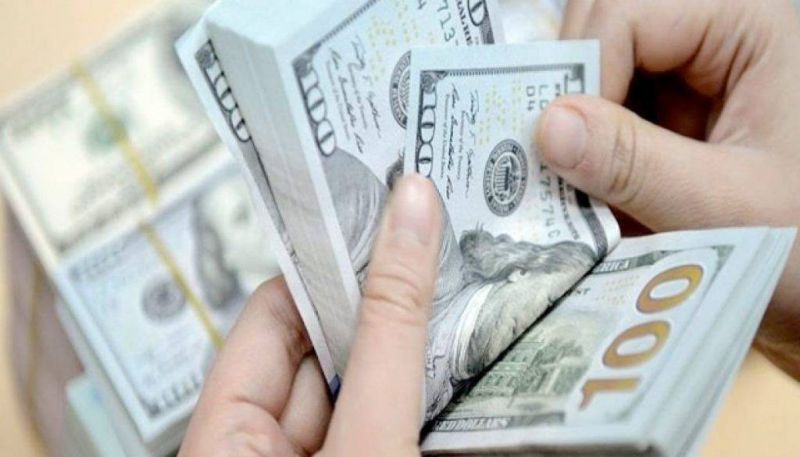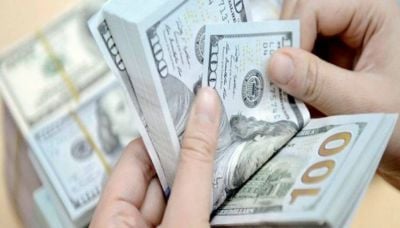
I’m currently traveling, in a time zone several hours behind Beirut. Thus, my best indicator of significant developments in Lebanon is the number of missed calls I have early in the morning. By 8 a.m., while writing this, I had around a dozen missed calls … and it’s not even my birthday. As it turns out, the calls were from journalists and TV stations.
The two big things happening this month in Lebanon are the soft launching of the new version of Sayrafa, the central bank’s foreign exchange platform, and, even more surprising, its announcement on May 9 requiring banks to start paying out “fresh” dollars to their customers starting in July.
Payouts in real dollars (or routine transfers overseas) had ceased over a year ago, replaced with withdrawals in lira at the (old) platform price of LL3,900 per dollar, causing a disguised haircut (or loss) to the depositor of around 68 percent. Of course, this haircut is voluntary, in the sense that a bank can always tell you that if you’re patient, they’ll give you your money back in full, at some unidentified time in the future … maybe when the Nobel Prize Chemists at Parliament’s Finance Committee finish “reconstituting deposits” at their underground laboratory … the same lot who torpedoed a much more equitable distribution of losses a year ago (aka the Lazard Plan).
In the latest announcement by Banque du Liban, it promises to restart paying out real dollars up to $25,000 per person on some sort of a schedule (yet to be decided). Based on a leaked document from last year, theoretically, this is quite possible, since accounts less than $50,000 were worth around $12 billion back then. So today, accounts less than $50,000 are way less; therefore, spread out over 10 years, it would cost a few hundred million dollars per year, which is quite achievable. The only questions remaining are what are the rules? For example, the loophole “legal approval” is a huge one.
Even more problematic, sources tell me that they will deduct from every individual’s “quota” of $25,000 any amount that they withdrew at the old platform rate (3,900). This pretty much excludes everyone I know, except a few stragglers, such as expats living overseas who couldn’t take advantage of Circular 151.
More importantly, who will finance it, i.e. where will this cash come from? Is it the banks through the 3 percent that they were supposed to recover via Circular 154? Or is it BDL, using the remaining (so-called required minimum) reserves, which are 15 percent of the total deposits?
The 3 percent is around $3 billion; however, due to an exemption that didn’t get a lot of attention in the media, BDL allowed banks to use their eurobond holdings at the market price (around 15 percent of par value now) toward meeting the requirements of Circular 154. Thus, in reality, banks only have around $1.5 billion to pay out. Their other problem is that they swore up and down to clients who were nice enough to comply that “this time, trust me ... I won’t do anything stupid with your money” (like using it to pay off old depositors, in other words, relaunching the Ponzi scheme). So clearly, this opens it up to a contentious and public media battle with the central bank, along the lines of:
“You pay it back!”
“No, YOU pay it back!”
But here’s the dilemma: even combining the maximum potential available funds by adding BDL reserves and bank holdings at their custodial banks, the amount available is around $18 billion, which is about half of what was available when dollar payouts stopped. So how can less liquidity today lead to what was impossible before?
Note that it was an announcement, which carries far less weight than a circular, albeit so many have been issued in the last year, that they’ve become like a Starbucks morning coffee … before the devaluation.
The “subject to legal approvals” and “negotiation” clauses mean that there’s much to be done before implementation, thus the only purpose I can think of is optics and marketing, and the announcement is not really serious, and more of a means for buying time, sowing confusion, and deflection.
Similarly, the launching of the platform is not much different than the first platform last year, which ended up with the 3,900 rate. That platform started out with the laudable objective of paying off small depositors (those with under $3,000), mainly not because they’re nice guys, but to neutralize the most likely segment of the population to demonstrate and break shit. Those accounts were paid off at LL3,200 per dollar at a time when the parallel market was at LL3,400, i.e. their loss was minimal.
In fact, according to the same leaked document from last year, those would have been the bottom 62 percent of all accounts. That’s a lot of people to take out of any potential violent demonstrations against banks and BDL, and for a very small cost. For whatever reason, the platform stayed on, but the rate was adjusted upward from 3,200 to 3,900, making the top 38 percent feel like they were getting a raise, even though their loss was progressively getting worse, as the parallel lira rate deteriorated.
Our expectation today for Platform II is similar. I was told by a senior official a few months ago that their intent was to set the rate at 10,000. Instead, they announced it at 12,000, thereby already abandoning their original goal, just like they gave up on the 3,200 before. Of course, if they do that, extrapolating from their last attempt, the only outcome I see (after futilely burning through some more reserves) is helping Merrill Lynch come closer to their prediction for the lira in its July 2020 report.
Dan Azzi’s column appears monthly in L’Orient Today and L’Orient-Le Jour.
